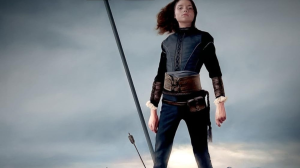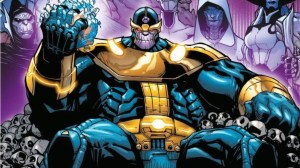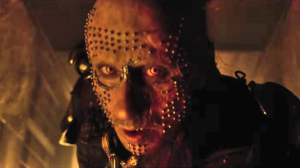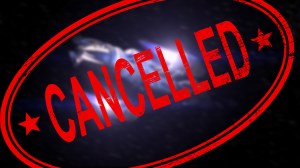Few movies balance pop culture and cinematic respect as smoothly as Back to the Future. Released in 1985, Robert Zemeckis’ classic didn’t just redefine time travel stories on screen – it also includes subtle (yet clever) nods to decades of sci-fi that came before it. Not many people realize this, but there are several references that make the film and the entire trilogy a true time capsule. They range from classic movies to visual and audio details that enrich the story for those who pay attention. And if you blinked, you probably missed some hidden details that connect Marty McFly (Michael J. Fox) to a much greater legacy than it seems.
Videos by ComicBook.com
Besides the iconic DeLorean, the film is full of Easter eggs that celebrate the history of this beloved genre. Here are 10 sci-fi movie hidden references in Back to the Future.
1) Star Wars: Episode IV – A New Hope

Star Wars is huge in the sci-fi genre, and Back to the Future doesn’t forget to pay homage to it. References are everywhere, but they really stand out when Marty, pretending to be an alien, threatens George (Crispin Glover) by saying that “it is your destiny” to ask Lorraine (Lea Thompson) to the school dance. That phrase alludes to Darth Vader’s line to Luke. Also, at another point, Marty tells Doc Brown (Christopher Lloyd) that he is his “only hope,” recalling Leia’s message to Obi-Wan Kenobi. What’s cool is that these lines work not only as references, but also as tools within the story’s logic: Marty uses pop culture icons from his era to change the past – turning fiction into a means for action.
2) The Atomic Kid

In Back to the Future, it’s November 12, 1955, and The Atomic Kid is showing on the Town Theater marquee. It’s a subtle background detail, but what’s really interesting is that it’s more than just a tribute to the movie. The story is about a man who survives a nuclear explosion and gains special powers, which also nods to the original Back to the Future script. Before the story became what we know today, the initial idea was for Marty to use a nuclear explosion to travel to the future – not the lightning bolt from the clock tower.
3) Time After Time

[RELATED: This Fan Theory Solves One of the Back to the Future Trilogy’s Funniest Problems]
In both Back to the Future and Time After Time, the time and date chosen for the first time travel are exactly the same: November 5, at 10:15 a.m. Although the years differ, this coincidence feels very intentional – basically a direct nod to the film where H.G. Wells chases Jack the Ripper through time. Time After Time is a classic in the sci-fi genre, especially within time travel stories, partly because it uses this element as a metaphor for the clash between reason and chaos – something you can really see reflected in Back to the Future, where scientific ambition and its unpredictable consequences go hand in hand.
4) Dr. Strangelove

In Doc’s laboratory, the amplifier Marty plugs his guitar into bears an inscription that at first seems mysterious: “CRM-114.” This code is actually a direct reference to the military equipment in Dr. Strangelove, Stanley Kubrick’s film about the Cold War and nuclear threat. In that movie, CRM-114 is the decoder that stops B-52 bomber pilots from canceling an attack – a technical detail that symbolizes the absurd bureaucracy and madness of the arms race. In Back to the Future, the same code adds a layer of irony, suggesting that Doc’s lab operates on the fine line between genius and disaster.
5) 2001: A Space Odyssey
The acronym “CRM-114” reappears in 2001: A Space Odyssey, this time as the serial number of the Jupiter spacecraft, another Kubrick creation deeply immersed in philosophical reflections on human progress. The reuse of this code was a favorite of Kubrick, who liked to create internal links between his films. By including this detail in Back to the Future, not only is a tribute paid to him, but it also reinforces the intertextual nature of sci-fi – a genre where symbols get recycled and meanings multiply over time.
6) The Time Travelers

In the center of Hill Valley in 1955, a billboard that might seem subtle catches the eye of those who pay close attention. It reads, “Time to Travel? Ask Mr. Foster Travel Service.” While it looks like just an ordinary ad, it’s actually a reference to the movie The Time Travelers. In that film, scientists create a portal to the future and face the consequences of crossing temporal boundaries. This advertisement once again highlights the ever-present theme of time travel, even within everyday urban settings.
7) The Adventures of Buckaroo Banzai Across the 8th Dimension

The Adventures of Buckaroo Banzai Across the 8th Dimension isn’t exactly a widely remembered sci-fi movie, but it’s celebrated in Back to the Future (at least, that’s what the fanbase has firmly believed to this day). One of the most notable nods is the number “88,” which is the speed the DeLorean needs to hit to travel through time, and also appears as “ROKIT 88” on Buckaroo Banzai’s Jet Car license plate. Plus, Doc’s “flux capacitor” concept might have been inspired by Buckaroo Banzai’s “oscillation overthruster,” a device that lets you travel through solid matter.
8) The Time Machine
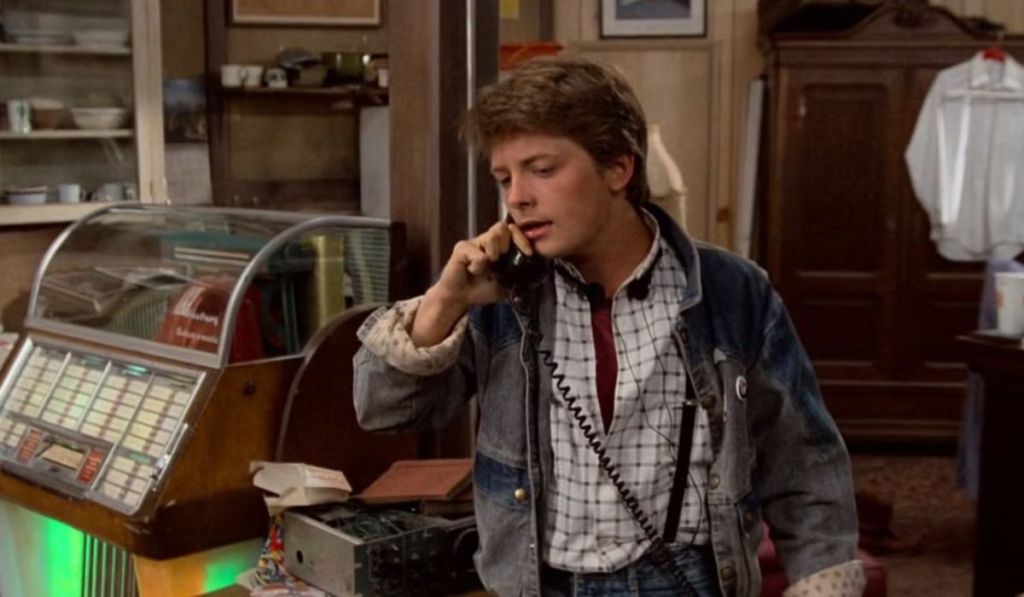
In the opening scene, as Marty enters Doc’s laboratory, you can hear high-pitched, fast piano chords, almost imperceptible, which directly reference the soundtrack of George Pal’s The Time Machine. This classic, based on H.G. Wells’ work, is one of the most influential films about time travel, and its sound effect appears in a similar way in Back to the Future. It’s a subtle but powerful tribute that clearly suggests Doc’s lab continues the tradition of eccentric inventions in sci-fi cinema – a direct link to productions that explore science as a catalyst for time travel.
9) Safety Last!

The urgency of time, the risk of missing the right moment, and the race against the clock – all central to the trilogy’s sci-fi tension – are perfectly shown through a visual metaphor from a surprising classic. Although Safety Last! isn’t a sci-fi movie, its presence in Back to the Future is impossible to miss. The image of Harold Lloyd hanging from the hands of a clock (one of the most iconic scenes in silent cinema) is recreated when Doc clings to the clock tower. The homage also appears early in the film, with a miniature clock replicating the original scene among the objects in the scientist’s laboratory.
10) The Wizard of Oz

The Wizard of Oz is referenced in Back to the Future, but it also works as a metaphor for time travel. When Marty wakes up in Lorraine’s bedroom in 1955, she tells him, “Well, you’re safe and sound now, back in good old 1955,” referencing Dorothy’s relief upon waking in Kansas after her journey through Oz. This moment highlights time as an unknown space – a journey into a strange world from which you have to find your way back. It captures a feeling of temporal displacement that’s key to the experience of time travel stories.



